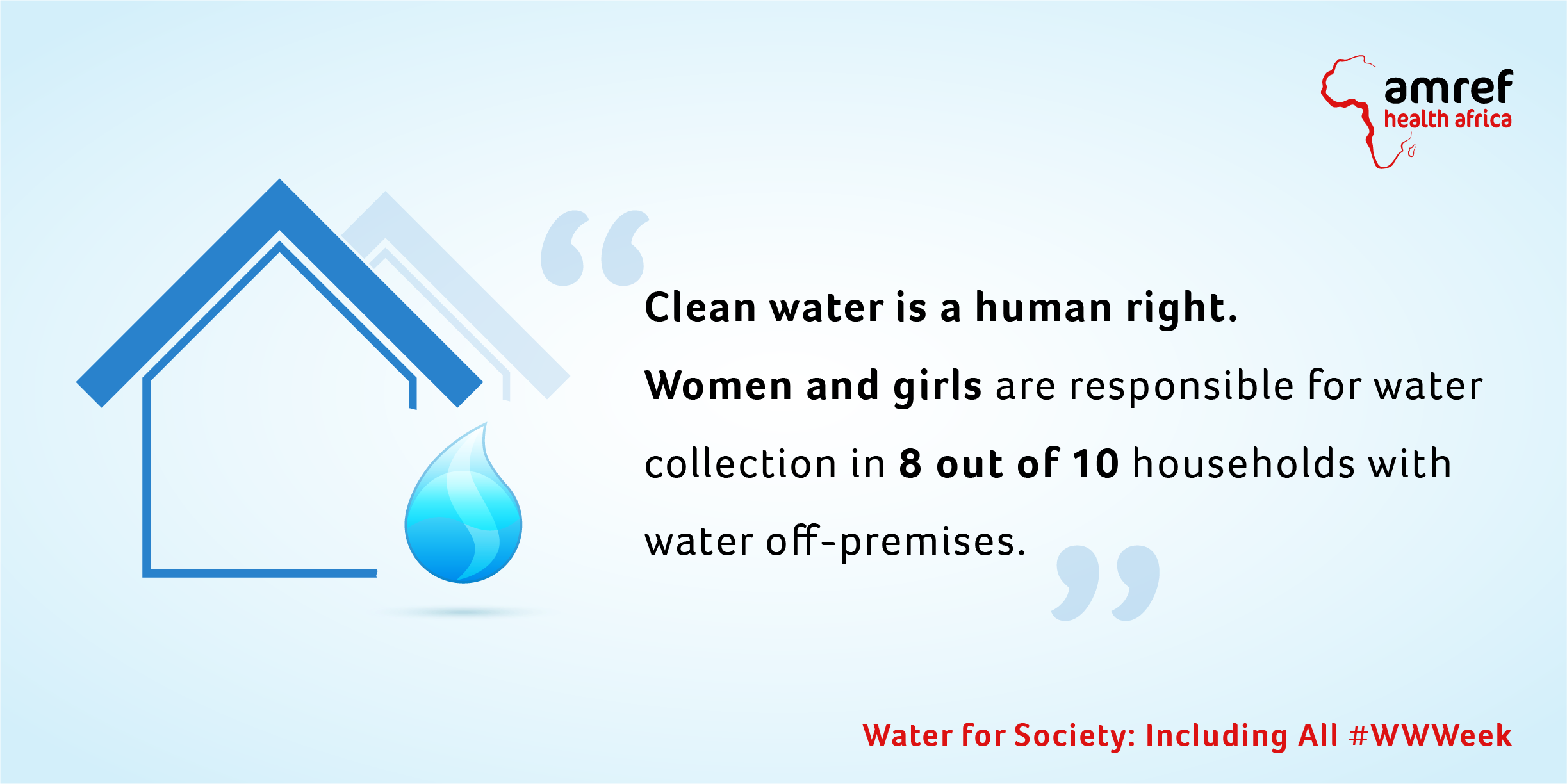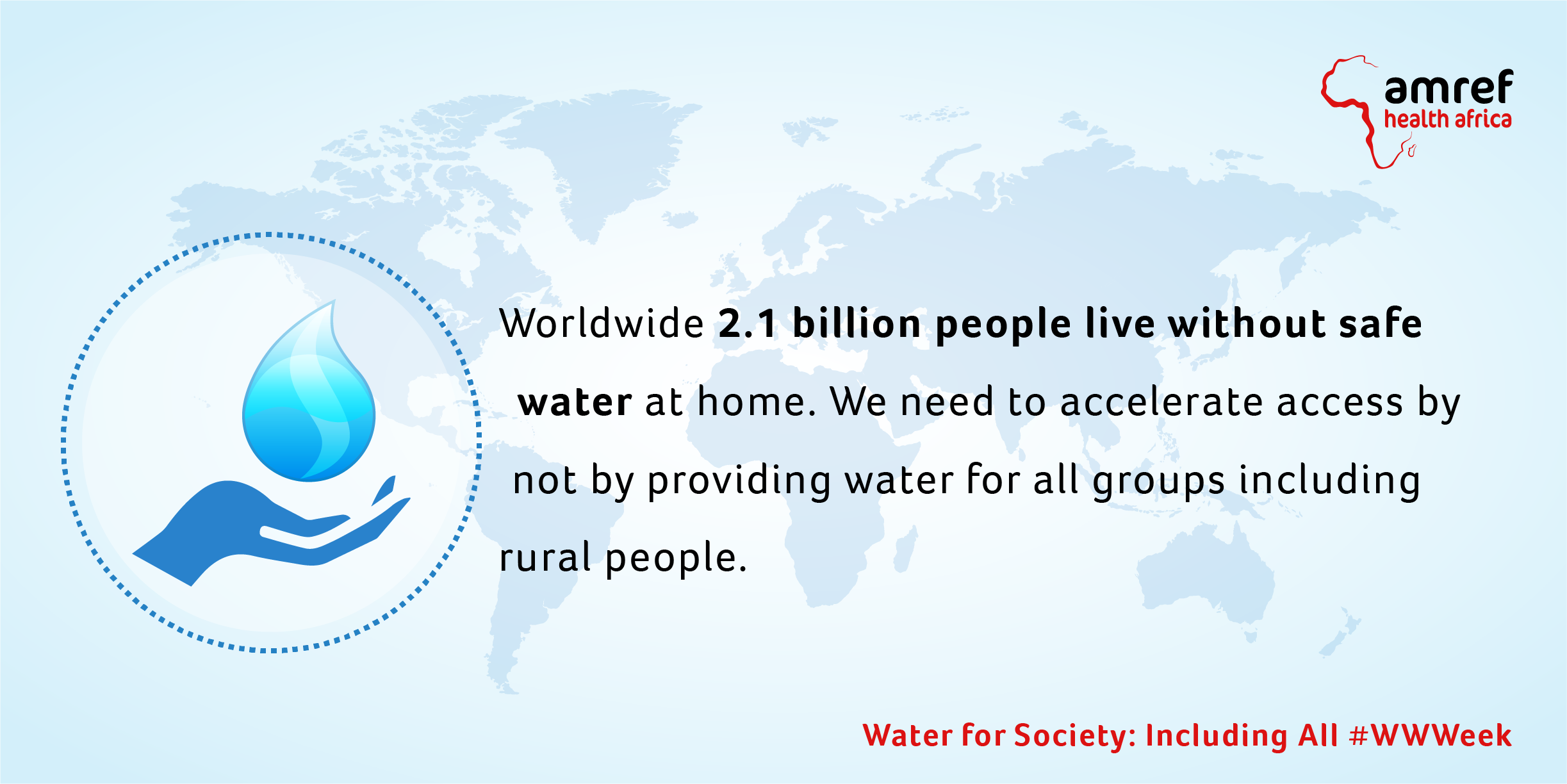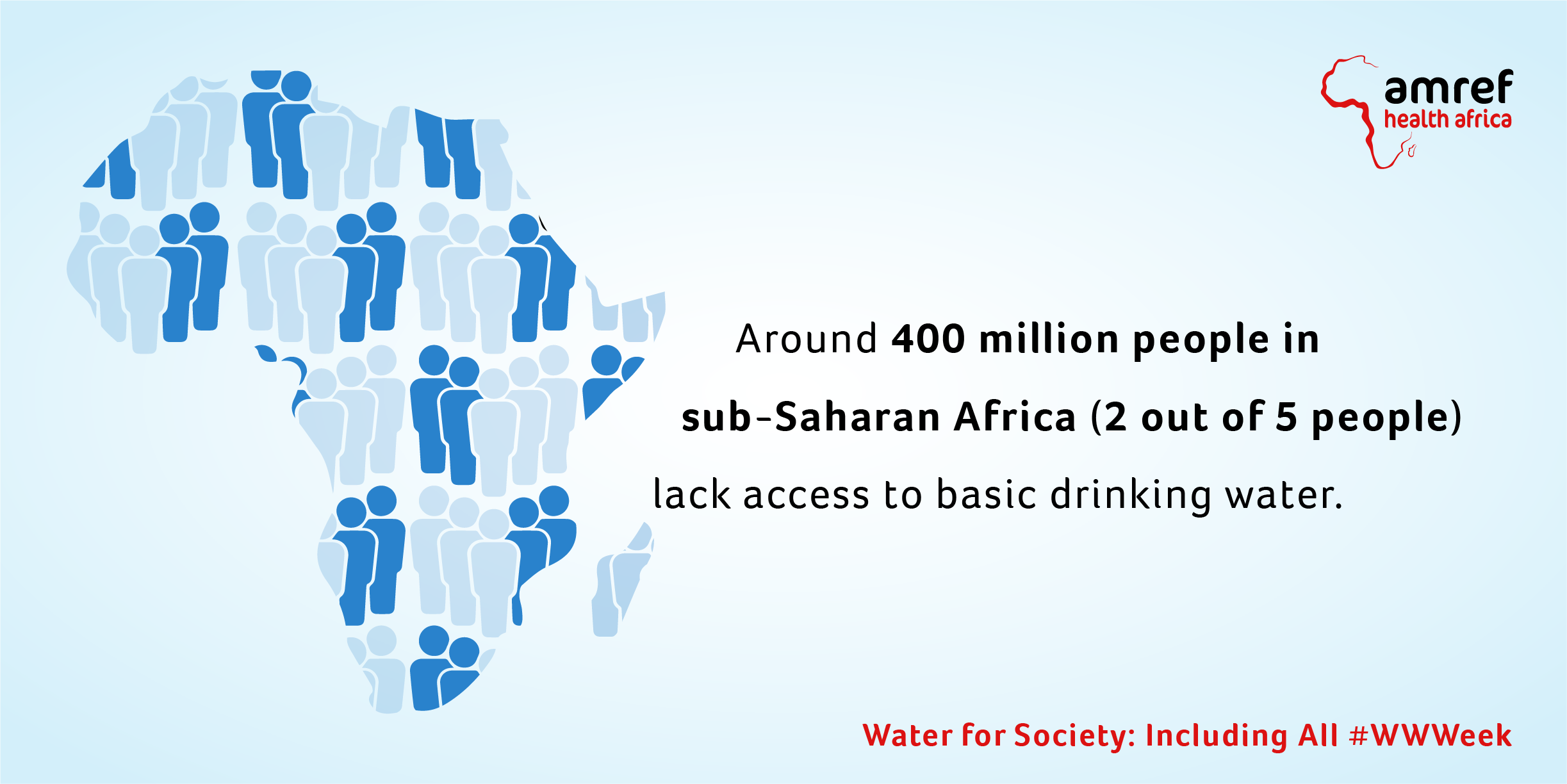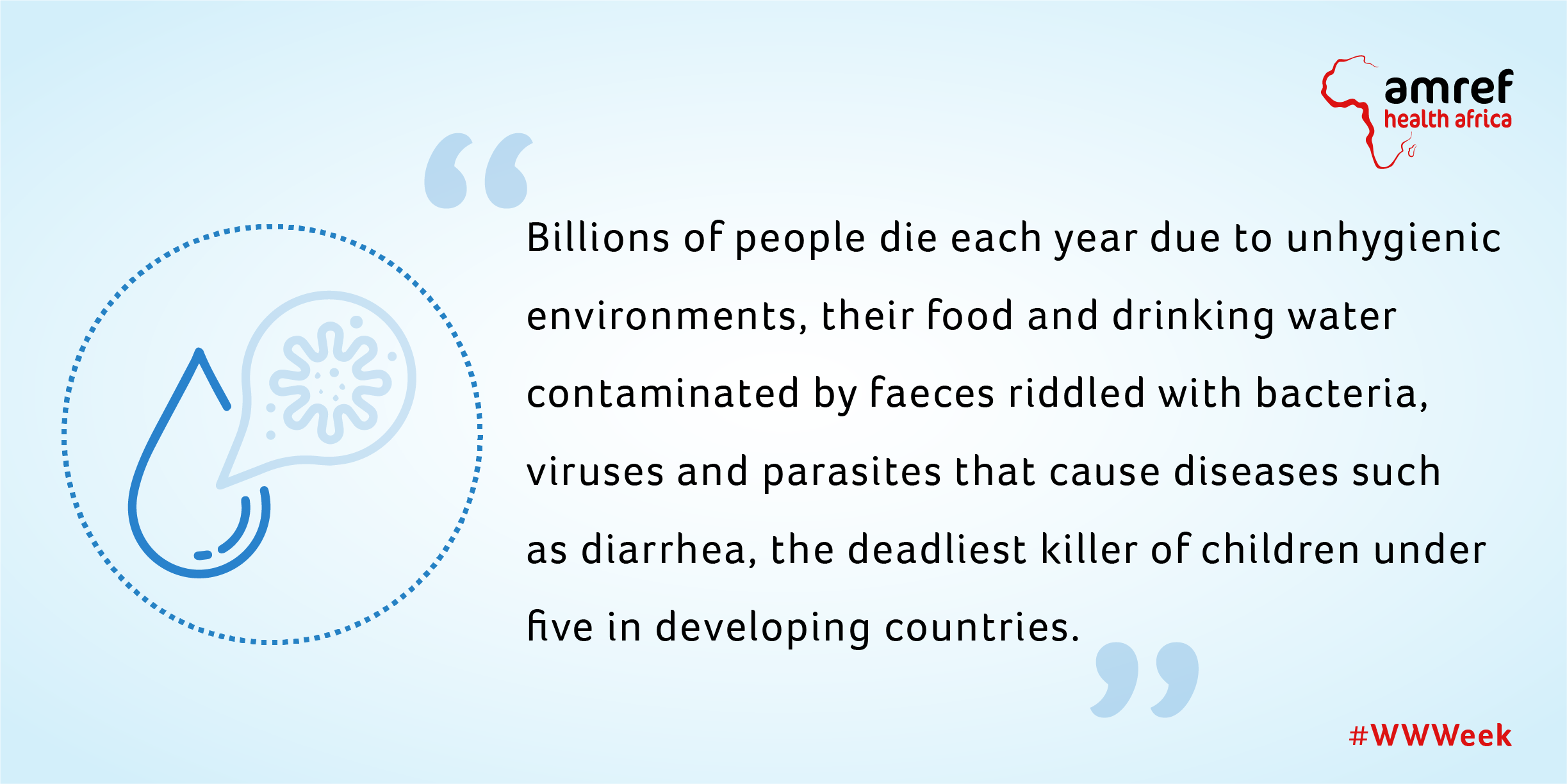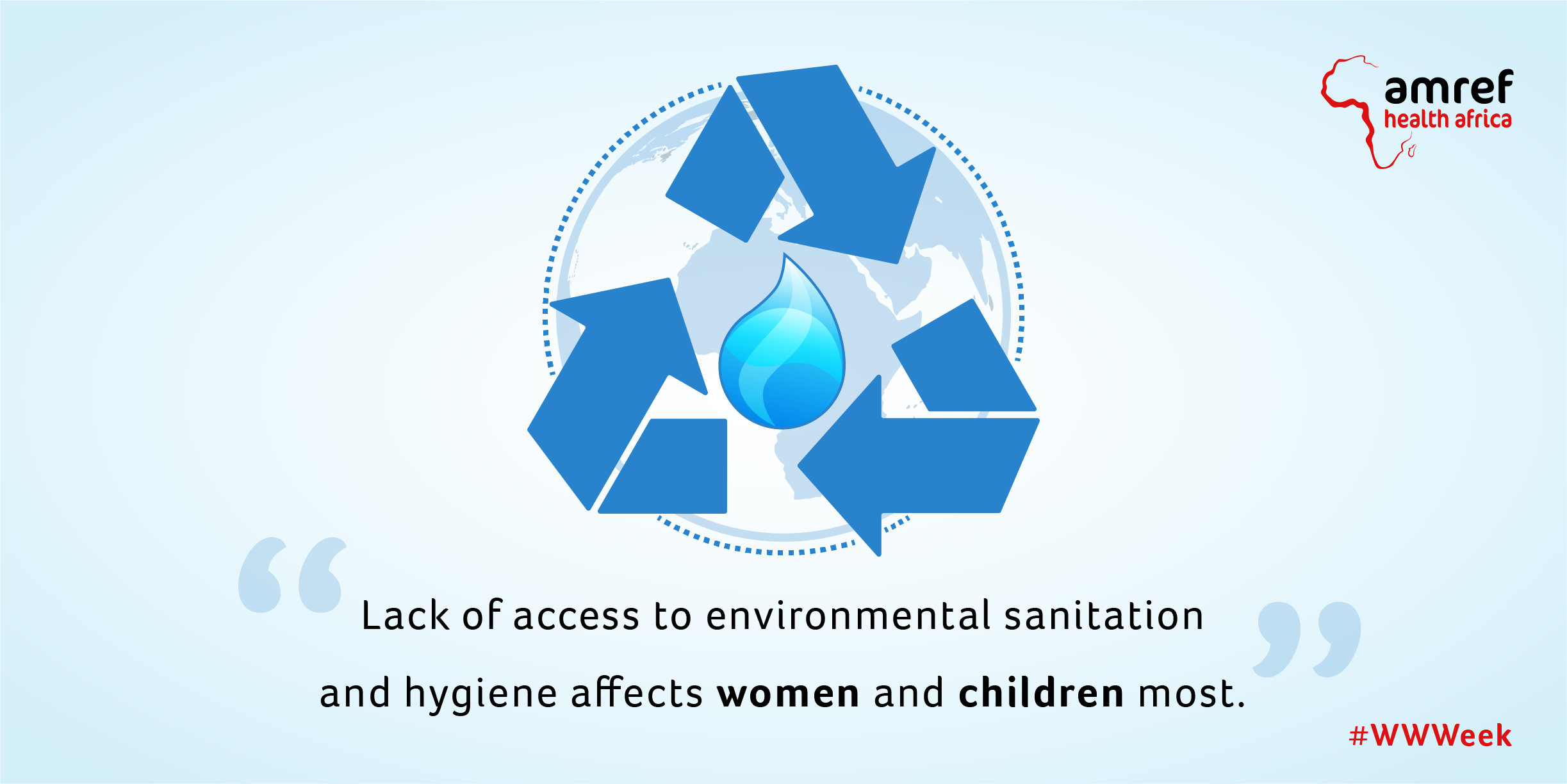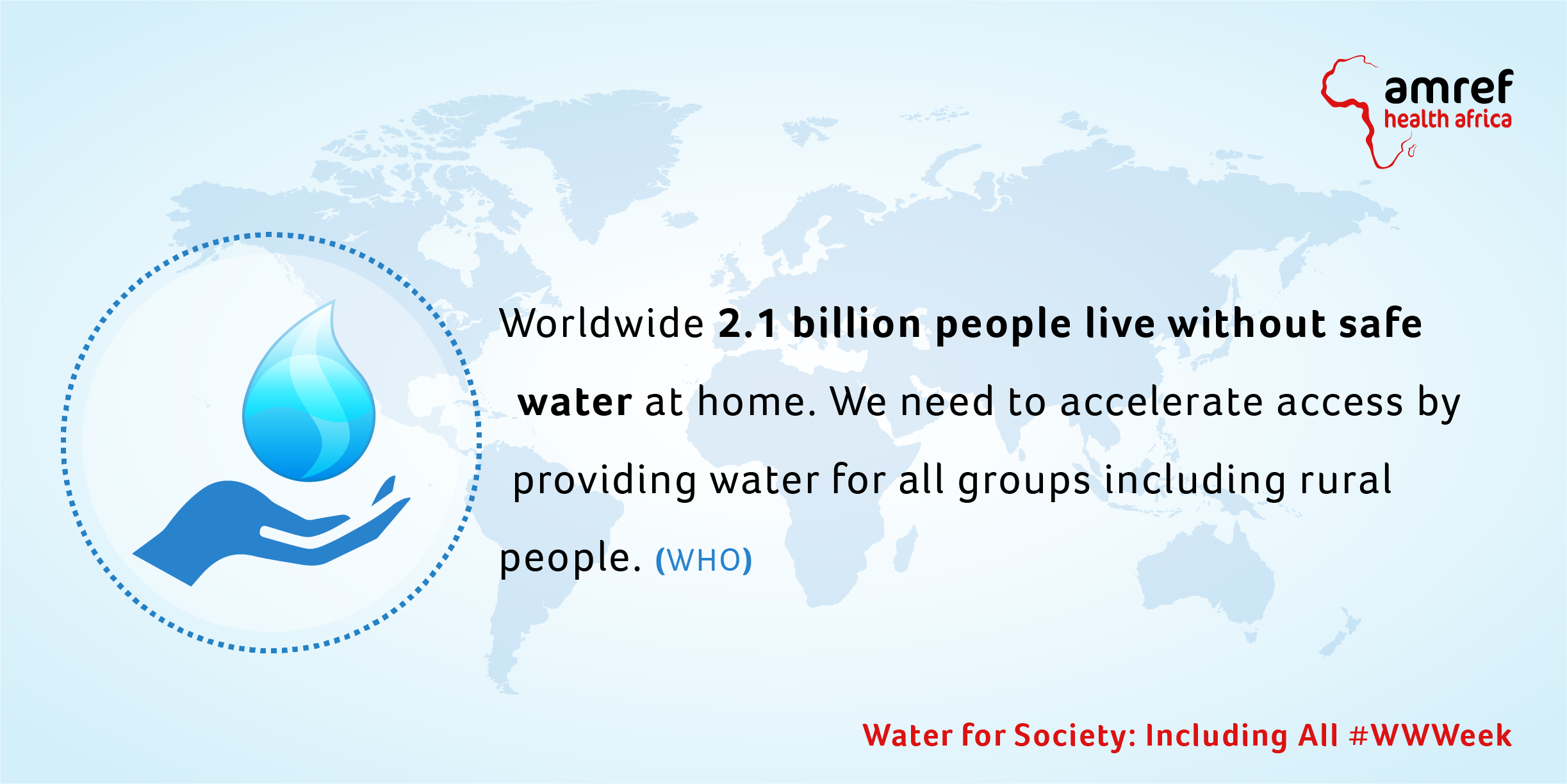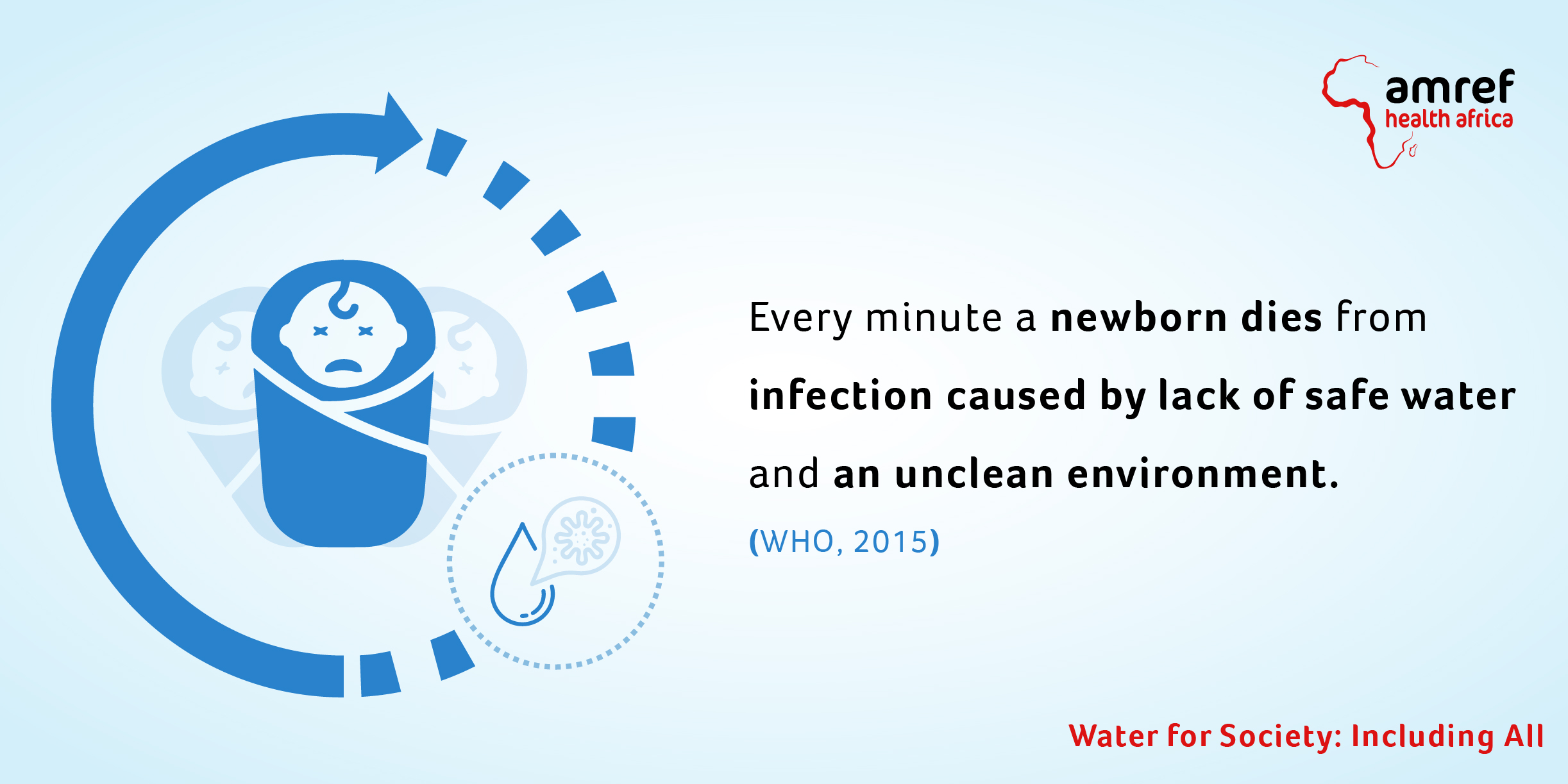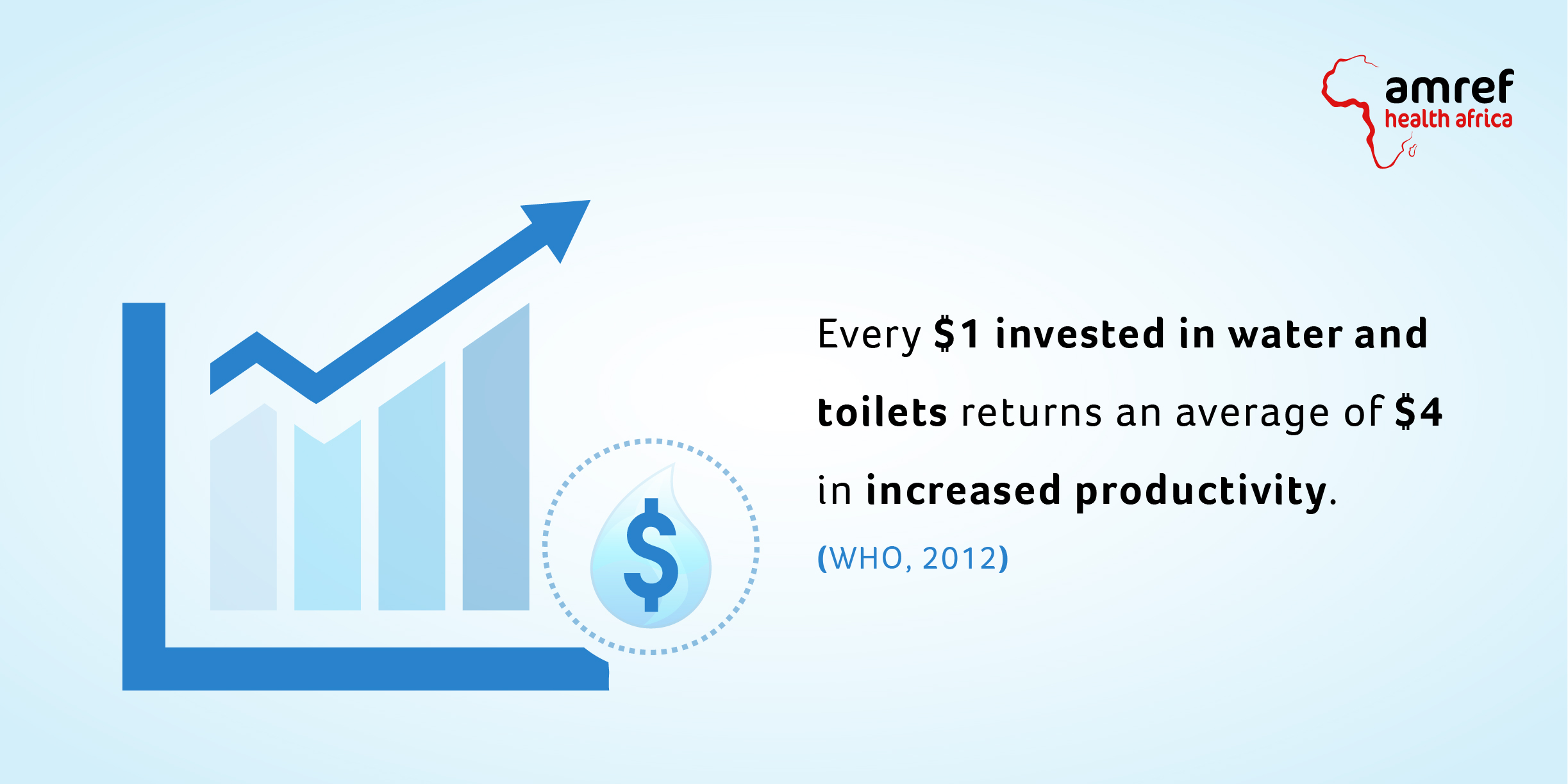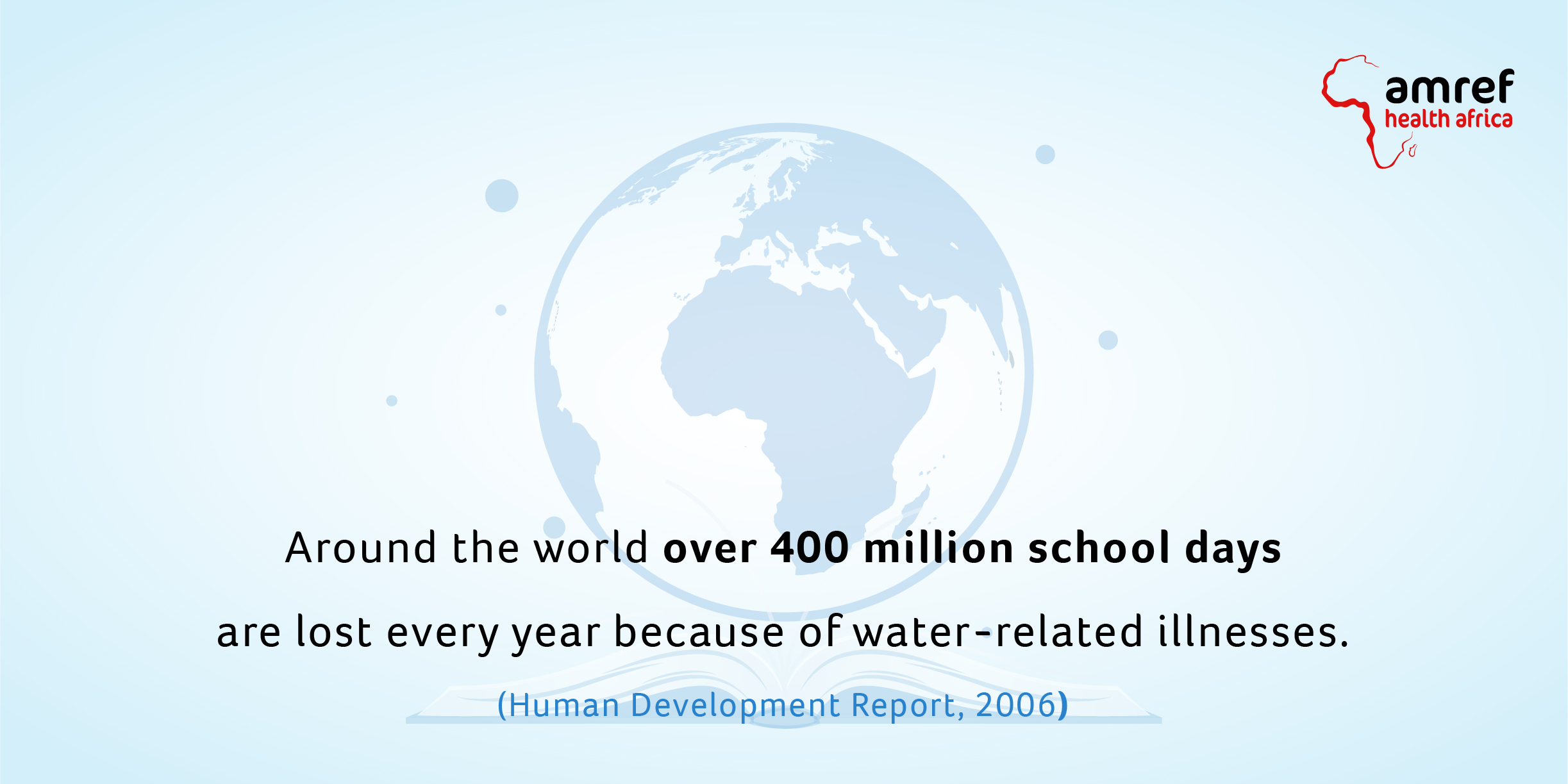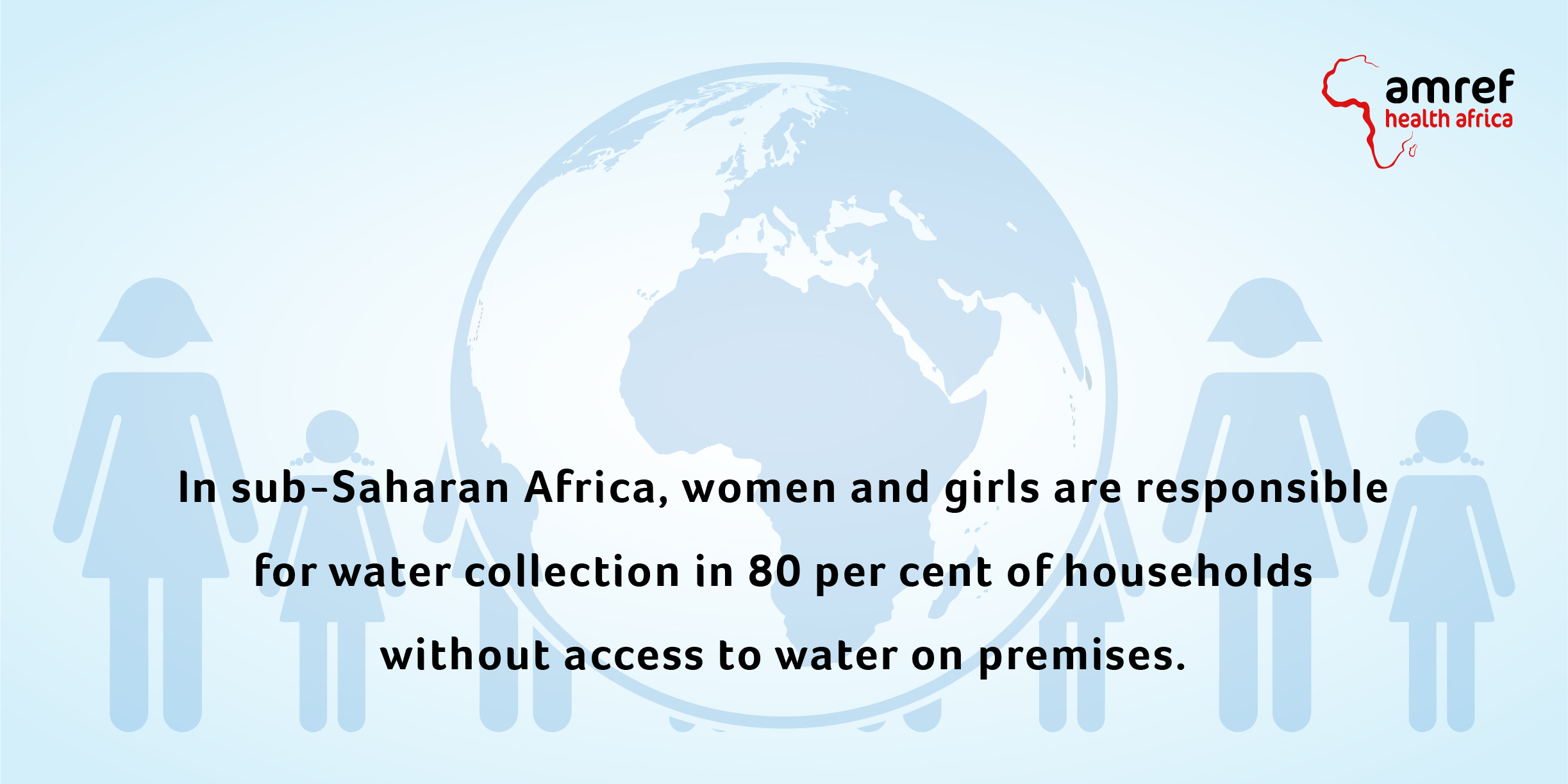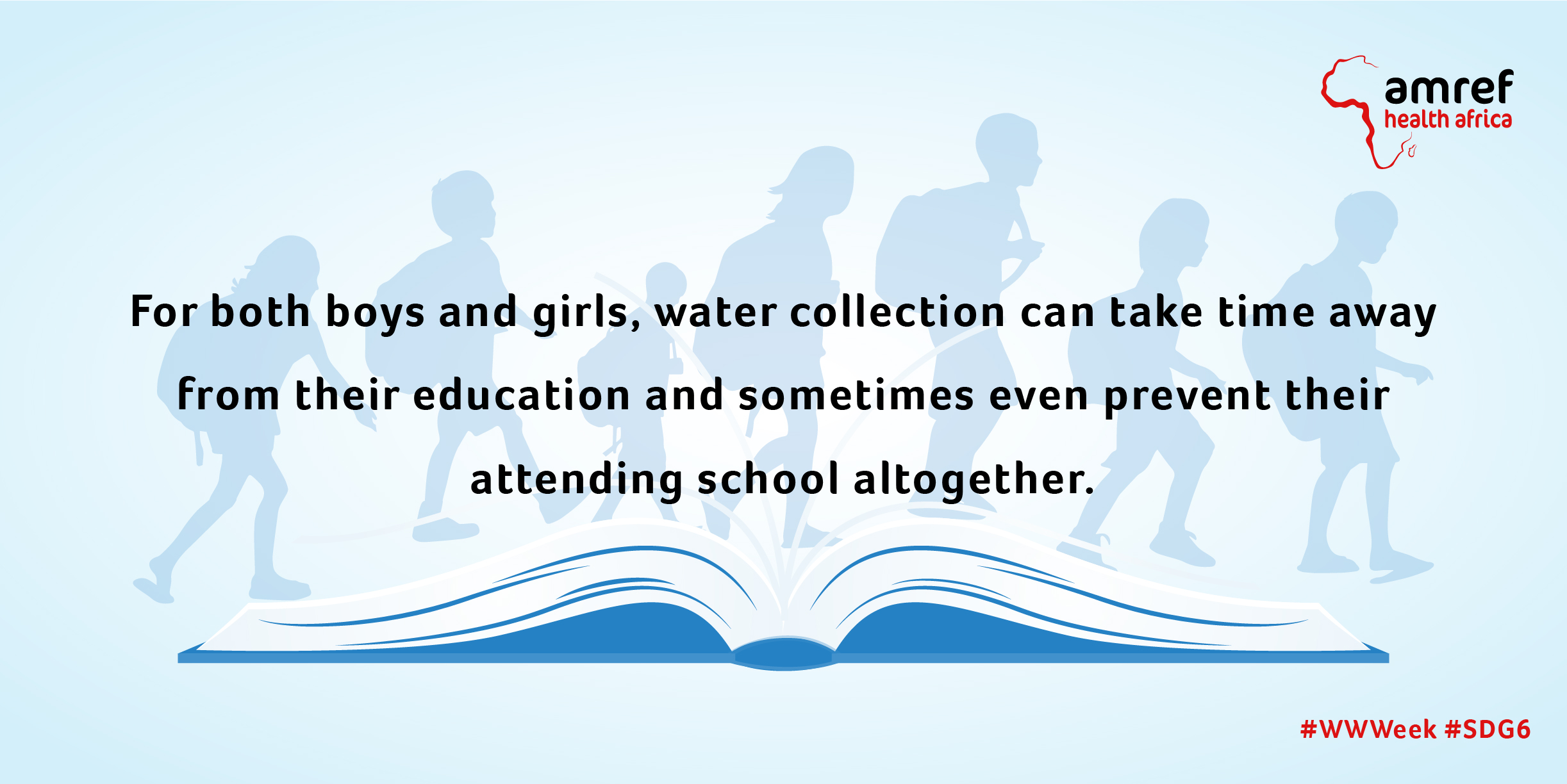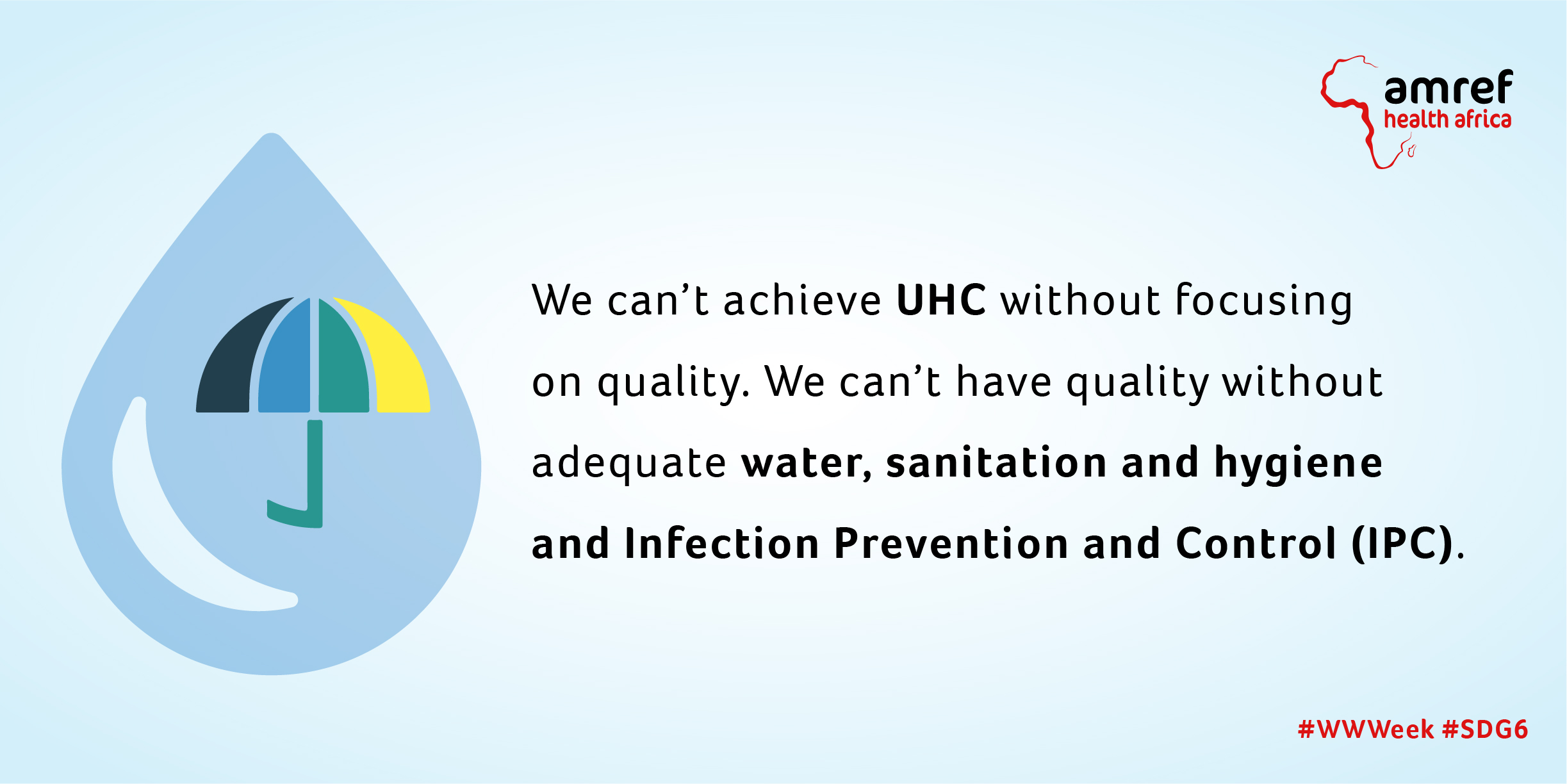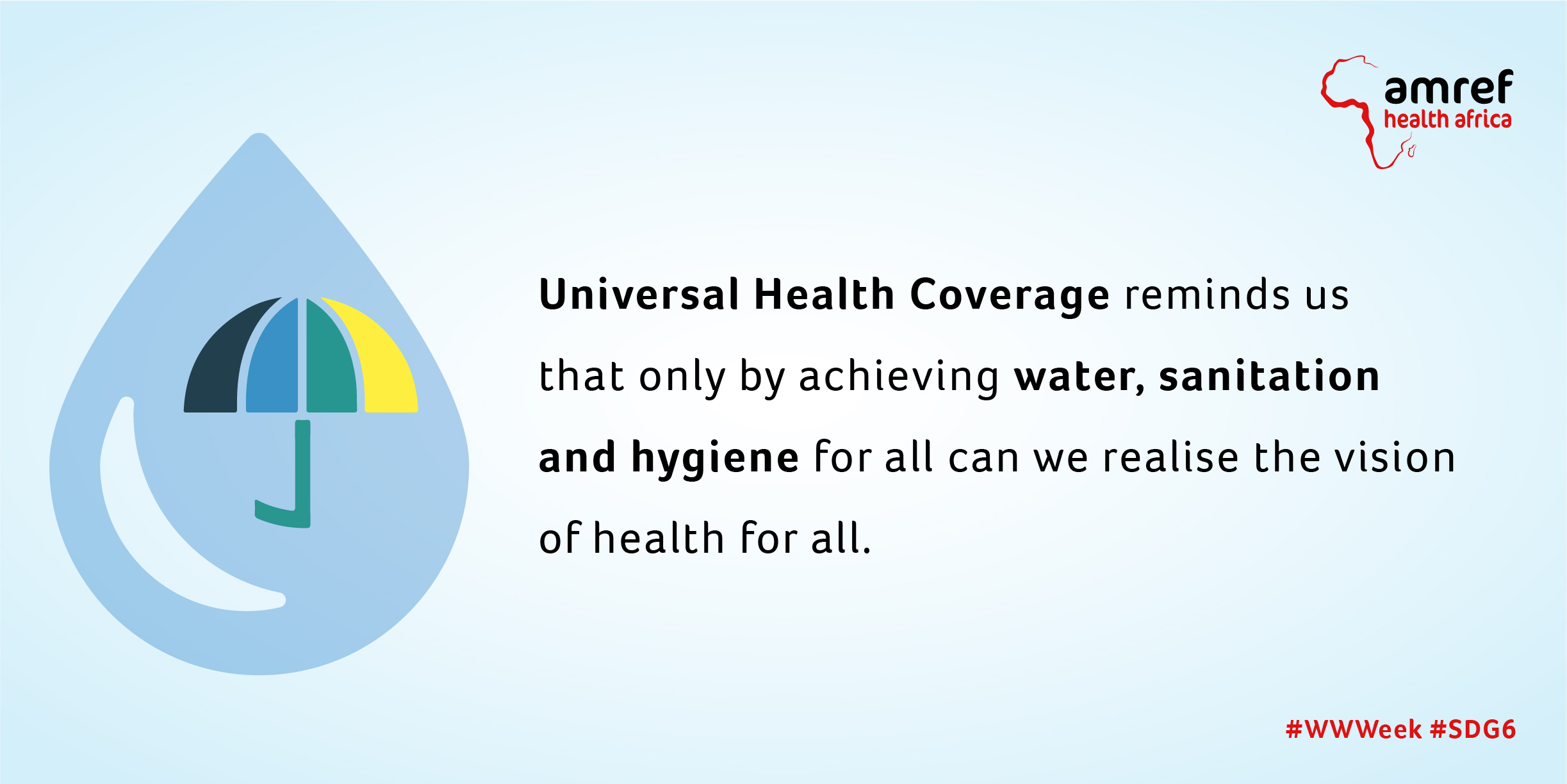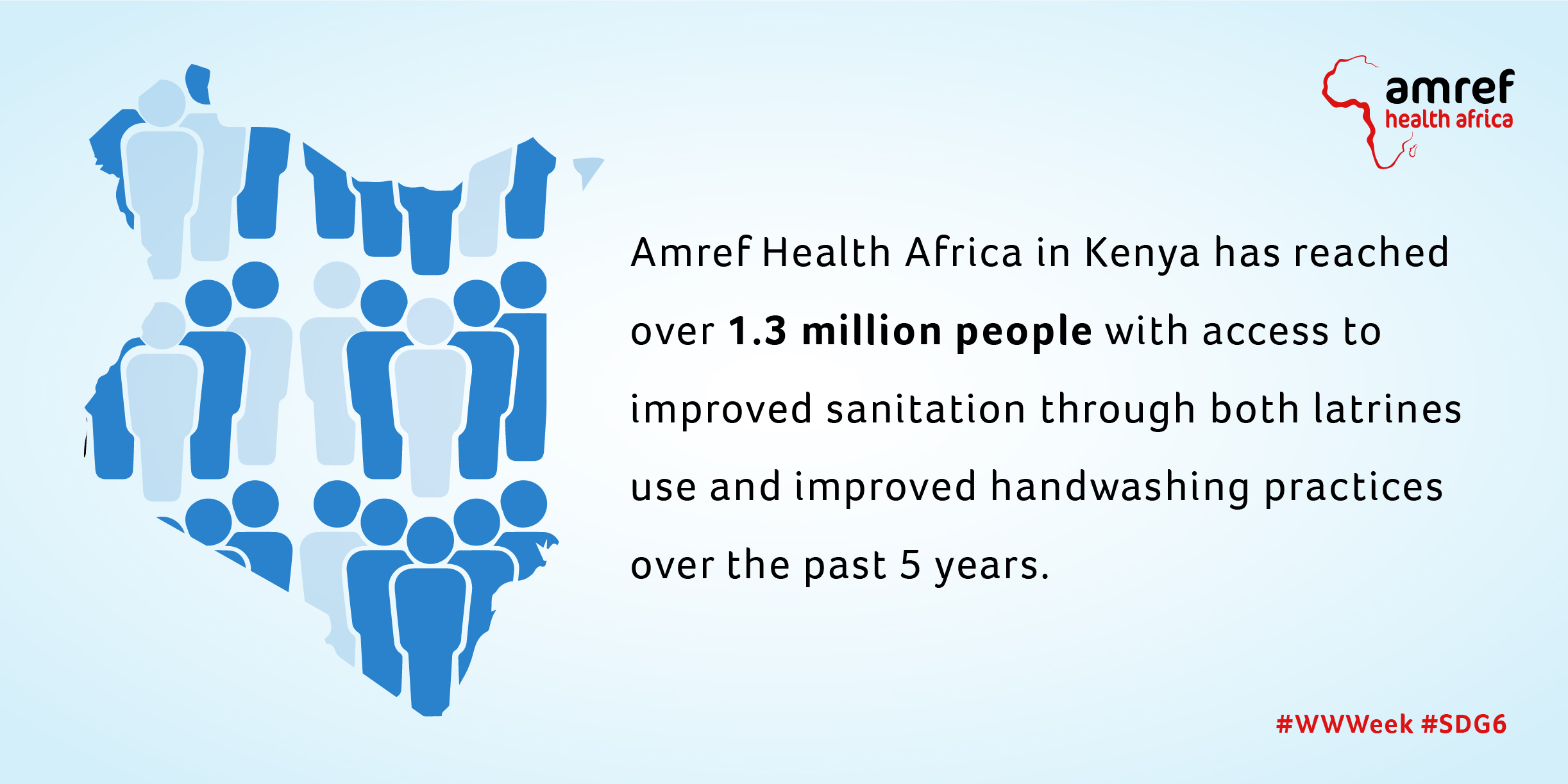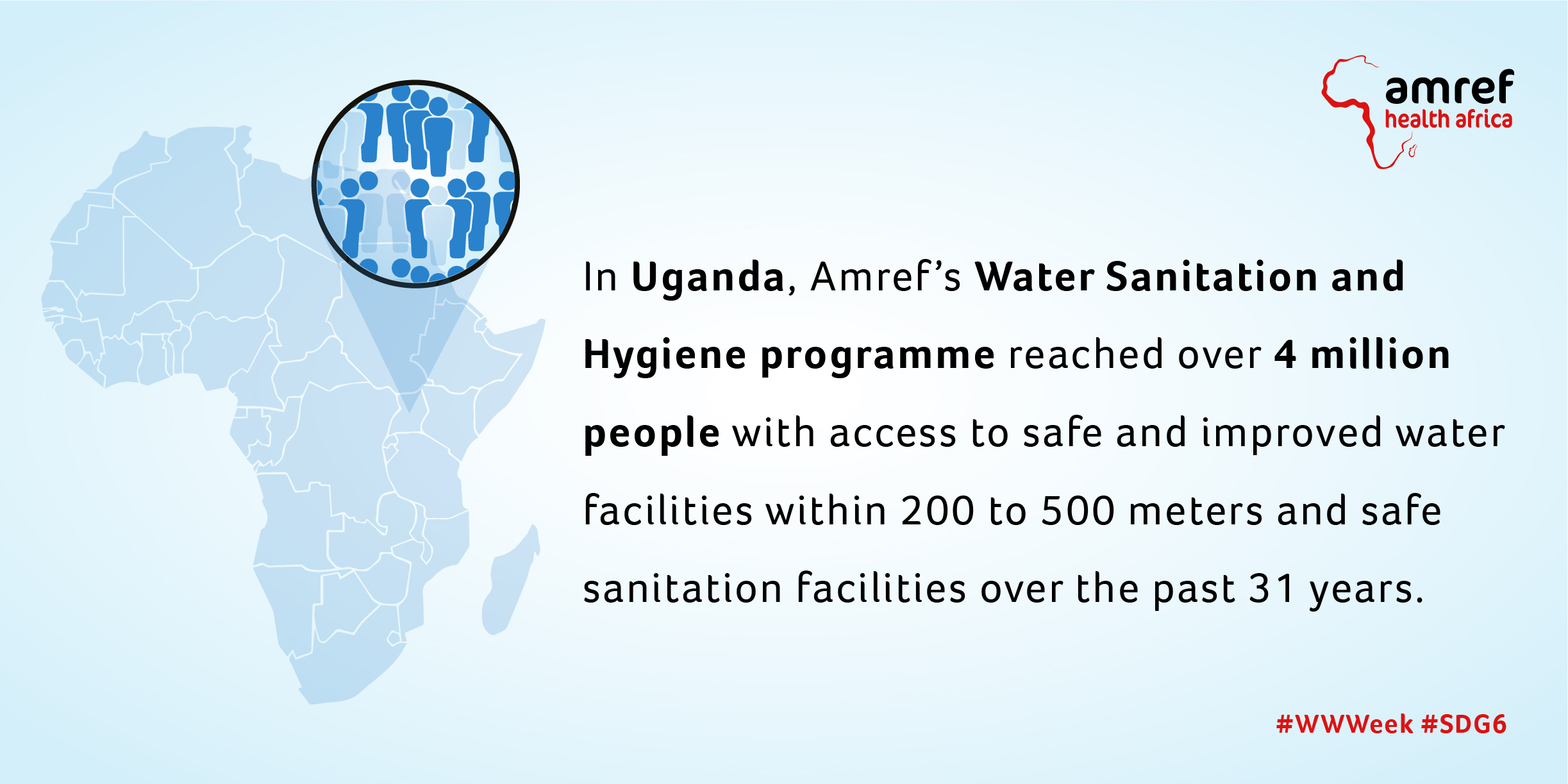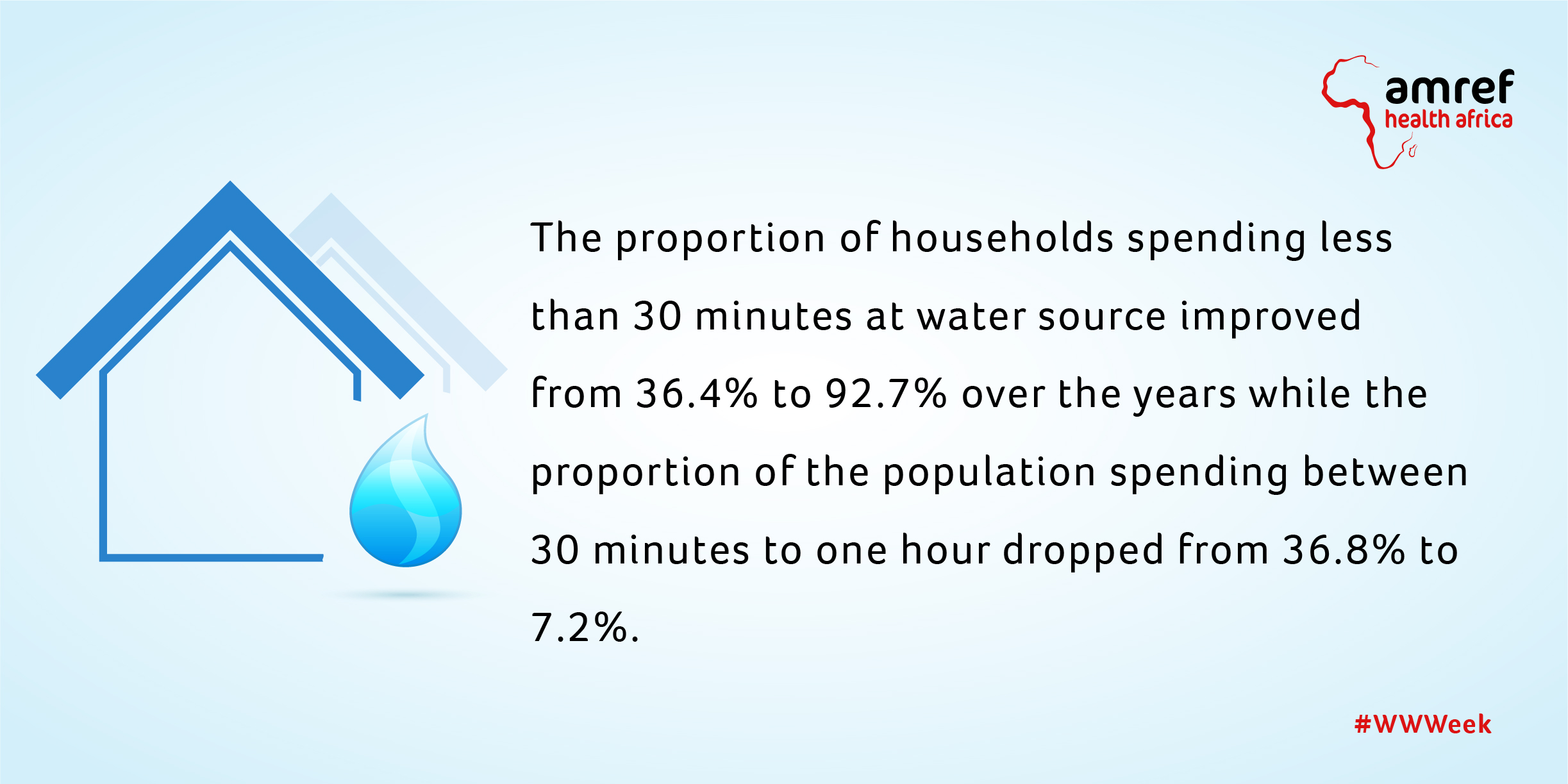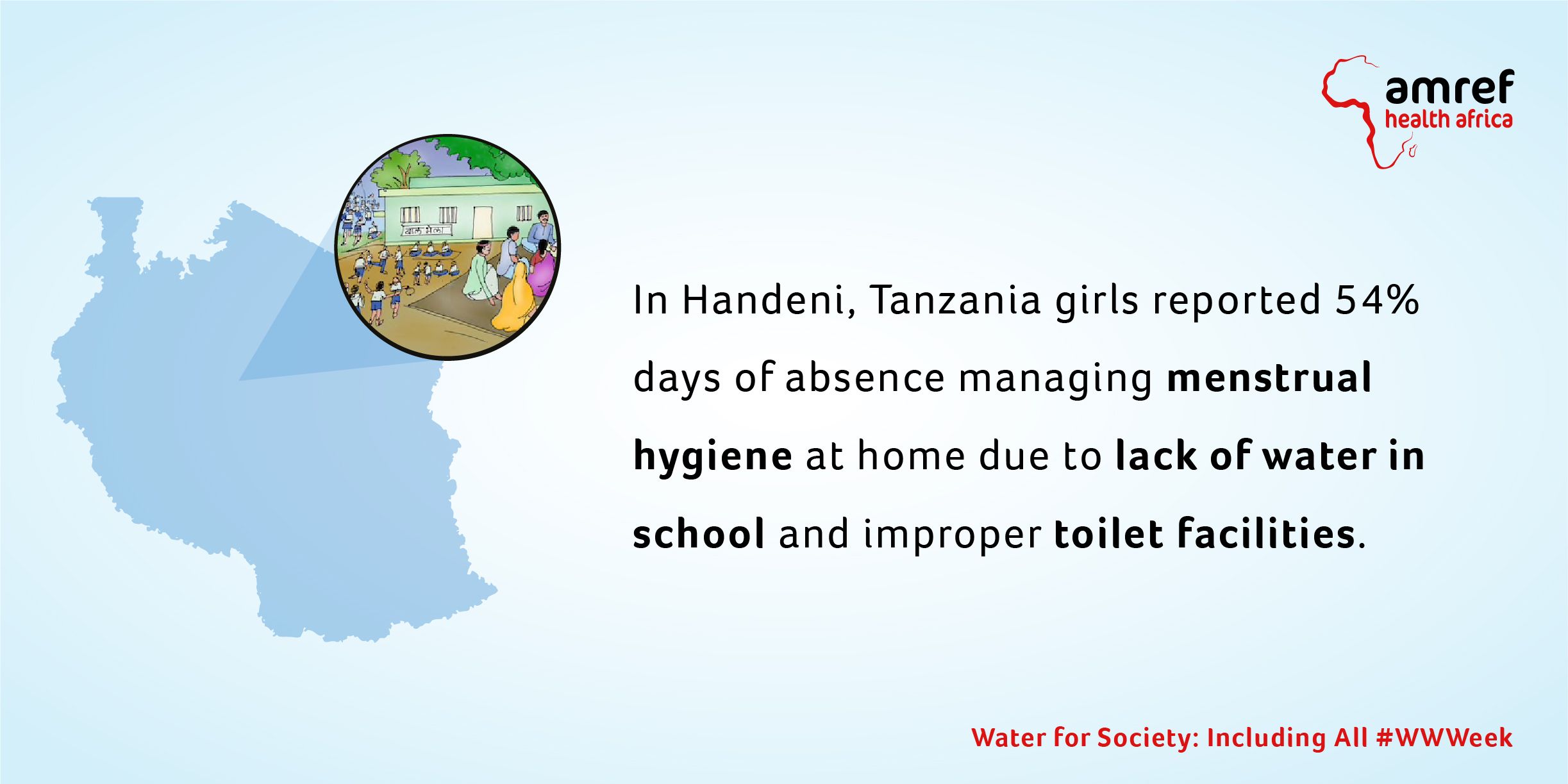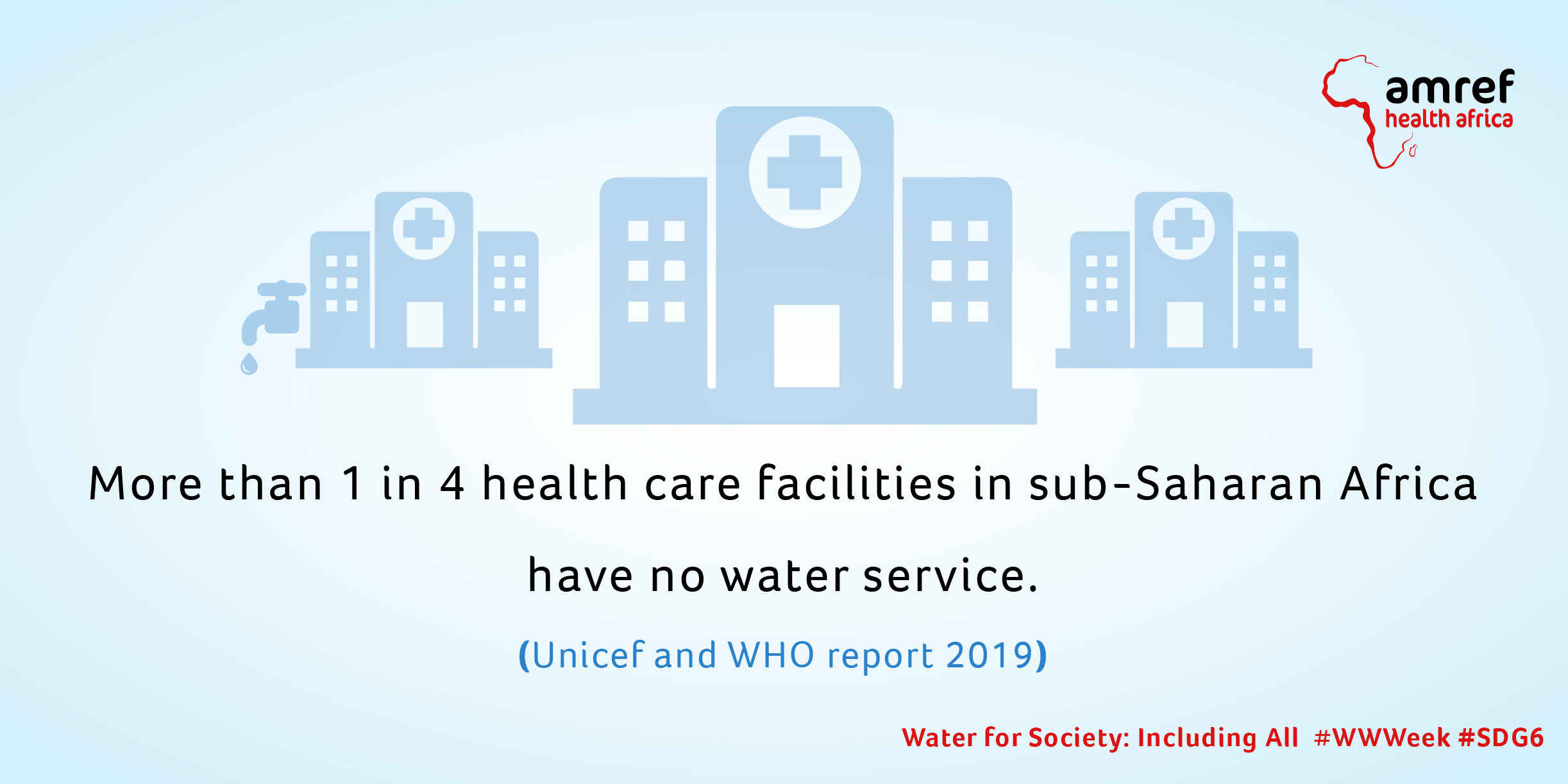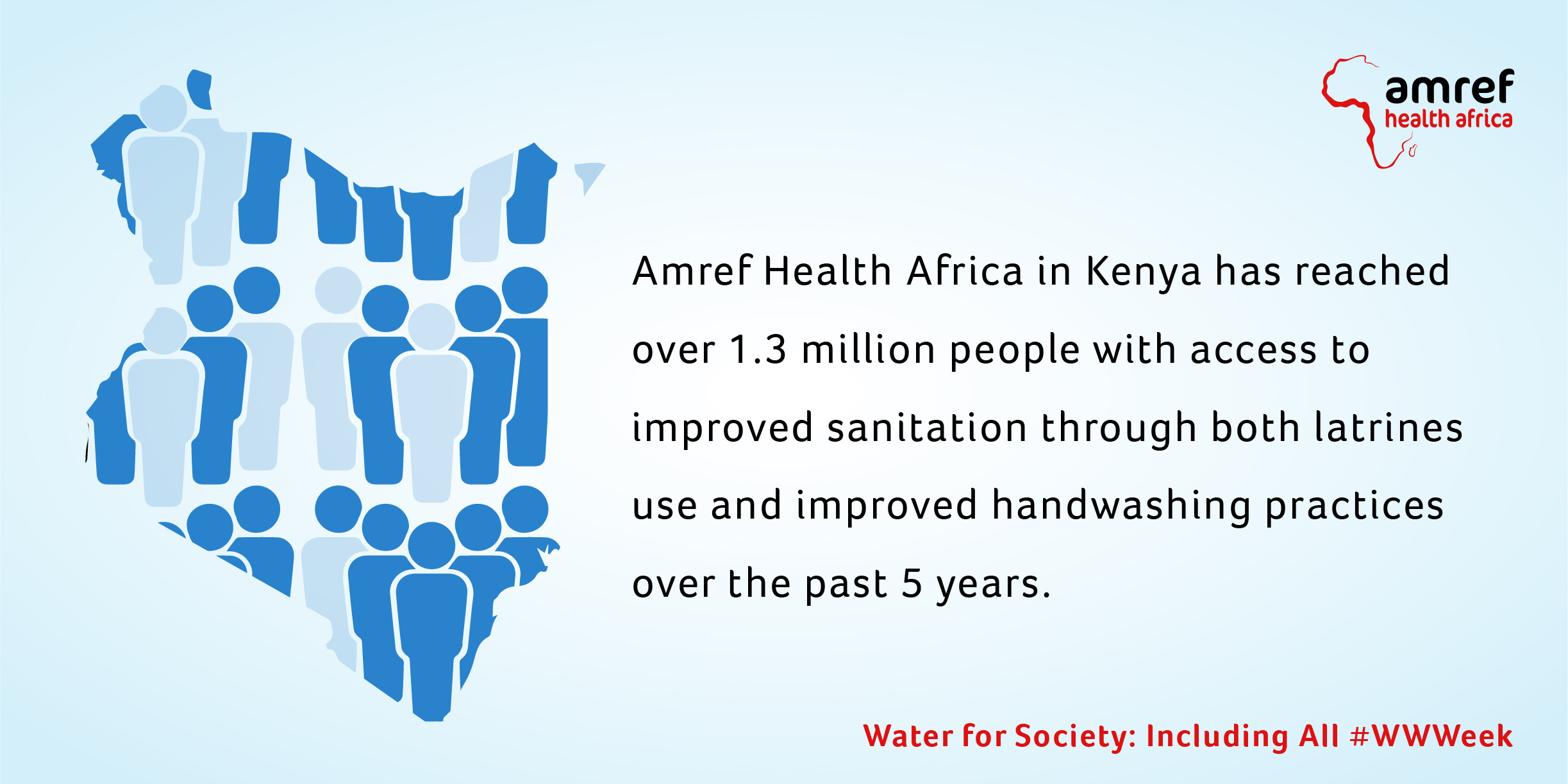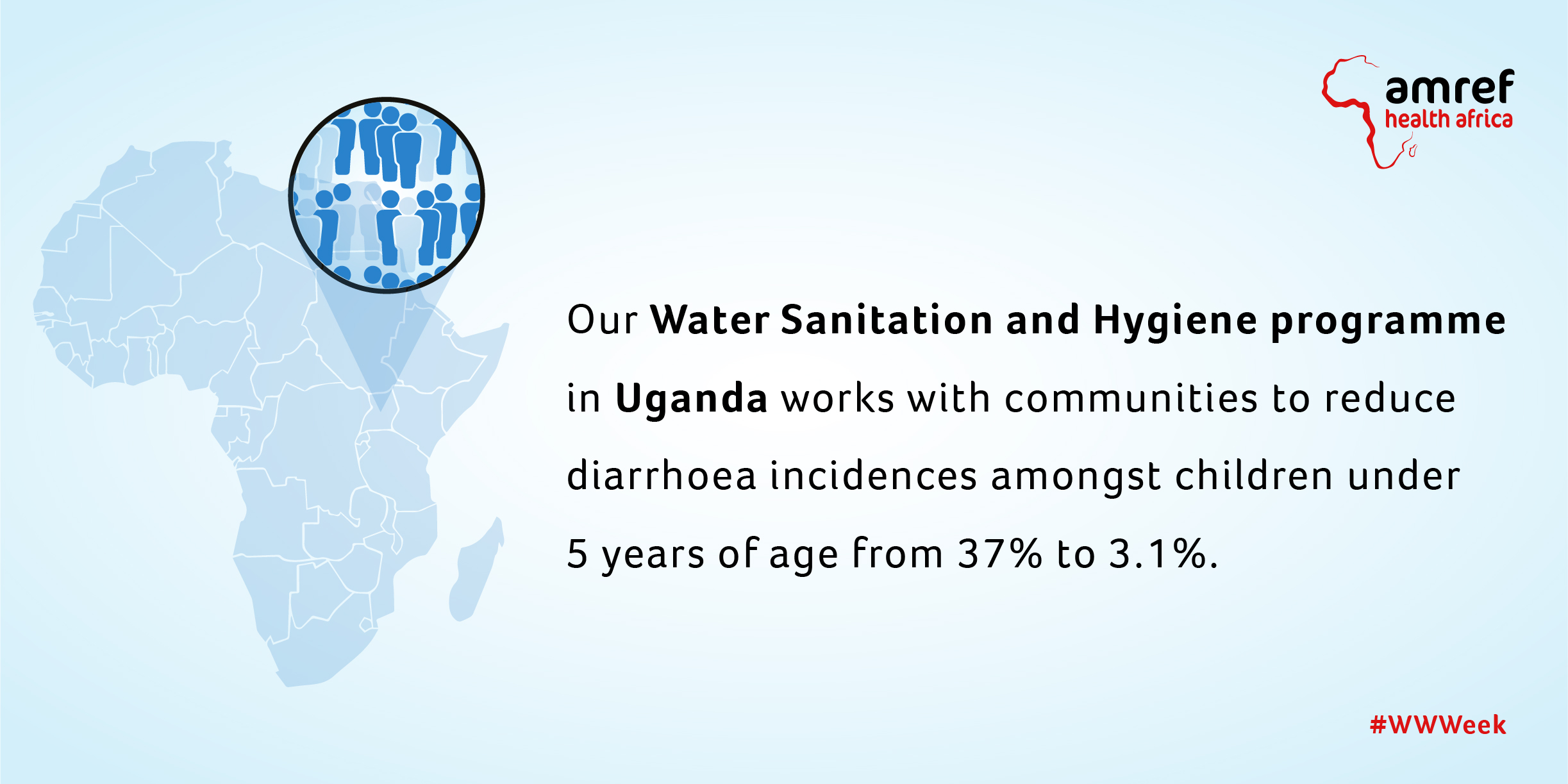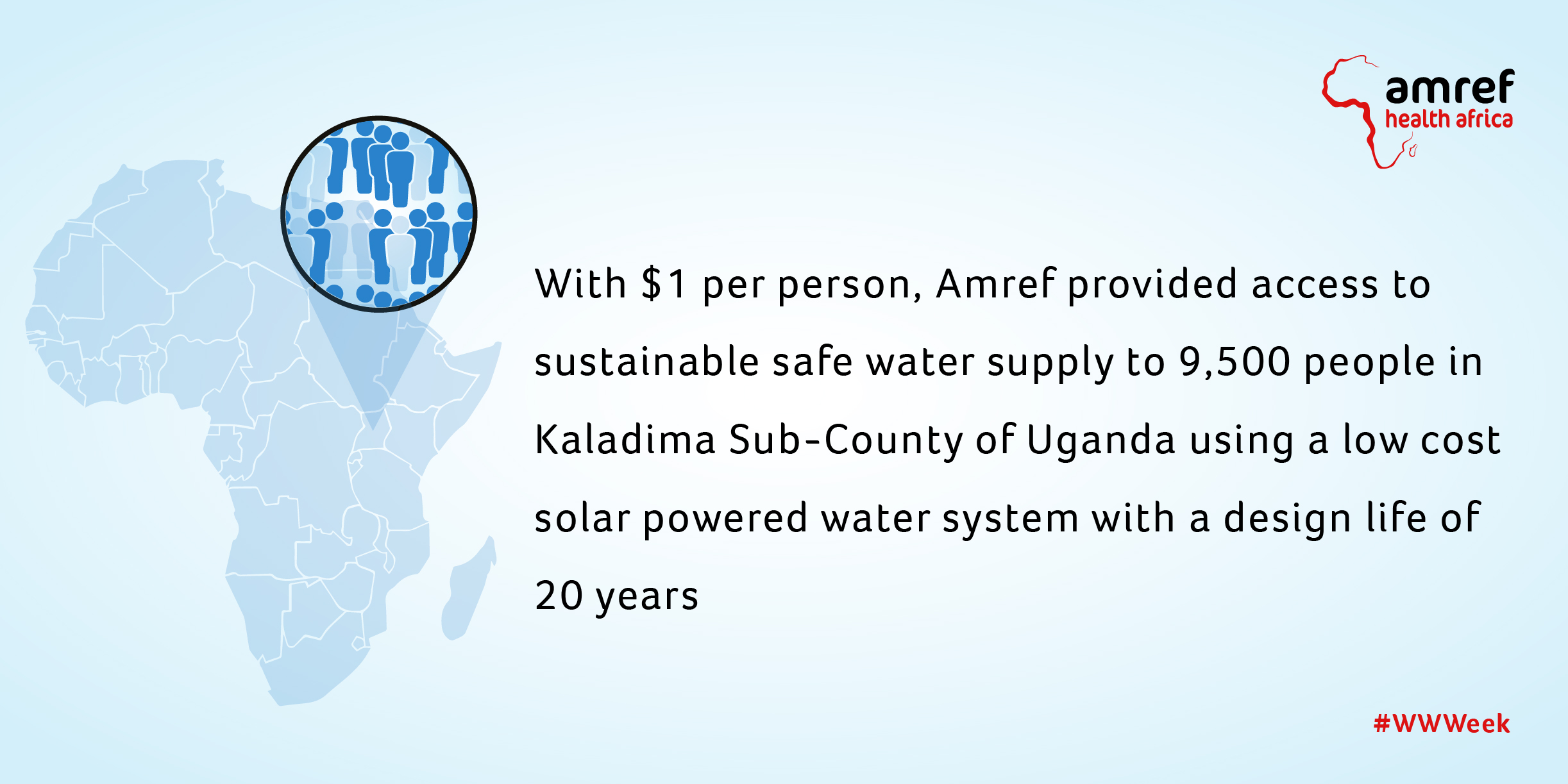HOW TO USE THIS TOOLKIT
Share the tweets & graphics below
Click on the links below to post to Twitter or Facebook, or download graphics to share on other platforms
Personalize your message
Craft your own tweet or post to share about #WWWeek #WWWeek_2019 #SDG6
Include visuals to strengthen your messages
Tag your content
Use these hashtags to amplify the reach of your post
Add a simple ask
Share a link for your followers to learn more
Encourage others to retweet or share their own posts about #WWWeek #WWWeek_2019 #SDG6
Link back to this toolkit
Share this toolkit with your followers
HASHTAG
#WWWeek
#WWWeek_2019
#SDG6
Social Media Messages
Access to clean water means life for every child. Water for Society: Including All #WWWeek #SDG6
More than 700 children under 5 years die every day from diarrhea linked to unsafe water and poor sanitation safe water for old and young (source: un.org) #WWWeek #SDG6
Through Amref’s Kitui integrated Water Sanitation and Hygiene project, we reached 385,000 people with access to water. Water for Society: Including All. #WWWeek #SDG6
Worldwide 2.1 billion people live without safe water at home. We need to accelerate access by not by providing water for all groups including rural people. Water for Society: Including All #WWWeek #SDG6
Globally, about 2.5 billion people lack access to improved sanitation of which 695 million live in sub-Saharan Africa (Source: Sustainable Development Goals). #WWWeek #SDG6
Some 2.2 billion people around the world do not have safely managed drinking water services, 4.2 billion people do not have safely managed sanitation services, and 3 billion lack basic handwashing facilities. (Source: UNICEF, WHO)
Diseases related to poor water and sanitation including diarrheal diseases, malaria, and other neglected tropical diseases (NTDs) such as intestinal helminthiasis, schistosomiasis affect many rural communities. #WWWeek #SDG6
Billions of people die each year due to unhygienic environments, their food and drinking water contaminated by faeces riddled with bacteria, viruses and parasites that cause diseases such as diarrhea, the deadliest killer of children under five in developing countries.(source: un.org) #WWWeek
Solving the sanitation problem and helping people to practice better hygiene can save many lives and reduce incidence of disease. #WWWeek #SDG6
Lack of access to environmental sanitation and hygiene affects women and children most. (source: un.org)
Governments, private water utilities and international agencies must give priority and resources to institutional reform to contribute to better practices, good governance, safeguard basic rights and responsibilities of every citizen. (source:un.org) #WWWeek
Every minute a newborn dies from infection caused by lack of safe water and an unclean environment (WHO, 2015). #WWWeek #SDG6
Every $1 invested in water and toilets returns an average of $4 in increased productivity. (WHO, 2012). #WWWeek #SDG6
Around the world over 400 million school days are lost every year because of water-related illnesses. (Human Development Report, 2006). #WWWeek #SDG6
In sub-Saharan Africa, women and girls are responsible for water collection in 80 per cent of households without access to water on premises. (source: un.org) #WWWeek #SDG6
For both boys and girls, water collection can take time away from their education and sometimes even prevent their attending school altogether. #WWWeek #SDG6
More than 1 in 4 health care facilities in sub-Saharan Africa have no water service. (Unicef and WHO report 2019) Water for Society: Including All #WWWeek #SDG6
Amref Health Africa in Kenya has reached 414,300 people with access to clean water over the past 5 years. Water for Society: Including All #WWWeek #SDG6
Amref Health Africa in Kenya has reached over 1.3 million people with access to improved sanitation through both latrines use and improved handwashing practices over the past 5 years. #WWWeek #SDG6
Water, Sanitation and Hygiene underpins human health and must be considered as a key aspect of Universal Health Coverage; failure to do so will result in poor progress on public health targets, as well as an undue financial burden on health systems. #WWWeek
A broad, multi-sectoral approach is needed to realise the right to health. The health system has a leading role to play in ensuring policy coherence as well as leading cross-sectoral action on WASH as an inseparable part of its overall efforts to improve population health. #WWWeek
We can’t achieve UHC without focusing on quality. We can’t have quality without adequate water, sanitation and hygiene and Infection Prevention and Control (IPC). #WWWeek #SDG6
Universal Health Coverage reminds us that only by achieving water, sanitation and hygiene for all can we realise the vision of health for all. #WWWeek #SDG6
In Handeni, Tanzania 70% of primary and secondary schools have no reliable water supply sources, 80% are without proper sanitation facilities and more than 90% of schools lack hand washing facilities. Water for Society: Including All #WWWeek
In Handeni, Tanzania girls reported 54% days of absence managing menstrual hygiene at home due to lack of water in school and improper toilet facilities. Water for Society: Including All #WWWeek
In Uganda, our Water Sanitation and Hygiene programme reached over 4 million people with access to safe and improved water facilities within 200 to 500 meters and safe sanitation facilities over the past 31 years. #WWWeek
The proportion of households spending less than 30 minutes at water source improved from 36.4% to 92.7% over the years while the proportion of the population spending between 30 minutes to one hour dropped from 36.8% to 7.2%. #WWWeek
Our Water Sanitation and Hygiene programme in Uganda works with communities to reduce diarrhoea incidences amongst children under 5 years of age from 37% to 3.1%. #WWWeek
With $1 per person, Amref provided access to sustainable safe water supply to 9,500 people in Kaladima Sub-County of Uganda using a low cost solar powered water system with a design life of 20 years. #WWWeek
In Handeni, Tanzania girls reported 54% days of absence managing menstrual hygiene at home due to lack of water in school and improper toilet facilities. Water for Society: Including All #WWWeek
“In Uganda. 874 pupils (457 girls, 417 boys) are now enjoying their studies due to the presence of water and proper toilet within the school compounds. Students used to skip class to search for water and toilet facilities during study hours”, Mr. Yassin Mkono the headmaster,Tanzania. #WWWeek
In 2018, Amref Health Africa in Tanzania, implemented a school water, sanitation and hygiene project in two schools of Kwaluguru and Kwamatuku in Handeni District. The project aimed at contributing in improved school children’s health and right to education. #WWWeek
VIDEO: A consortium of partners including WASTE, Amref and Aqua for All have devised innovative model called Financial Inclusion Improves Sanitation and Health (FINISH) to address this challenge sustainably. #WWWeek https://www.youtube.com/watch?v=8Bvo5bubY1U&list=PLxdxKnKA6e9g-0M0jIWVghCleoZX3xHU0

